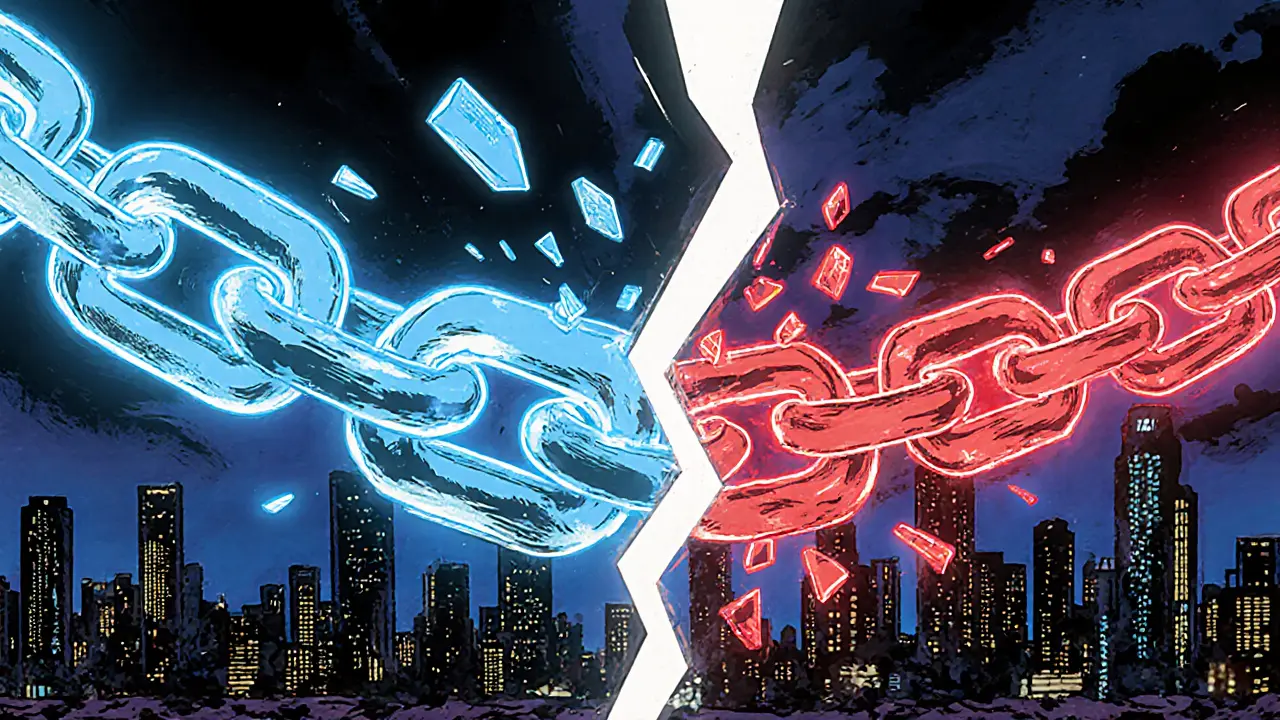Contentious vs Planned Forks: A Blockchain Guide
Learn the key differences between contentious and planned blockchain forks, their technical traits, market impact, and how governance shapes each type.
Read MoreWhen you hear blockchain forks, a split in a blockchain’s protocol that creates a separate chain sharing the same history. Also known as chain splits, they can be planned upgrades or community disputes. A fork occurs when developers, miners, or token holders disagree on the next set of rules, and the network branches into two independent ledgers. This branching often triggers a wave of new token listings, market volatility, and technical challenges for validators.
One of the fastest‑growing contexts for forks is the rise of modular blockchain, a design that separates consensus, data availability, and execution layers. By decoupling these layers, projects like Celestia can launch rollup chains without rebuilding consensus from scratch. A rollup, an off‑chain execution layer that posts compressed data to a base chain for security often relies on data availability sampling—a technique that makes sure the base chain can verify that all transaction data is present. When a rollup’s data availability rules clash with the base chain’s, a fork can emerge to resolve the conflict. Another critical player is the validator, a node that stakes tokens to secure proof‑of‑stake networks and signs new blocks. Validators must adapt quickly to new fork rules; otherwise they risk slashing penalties or losing rewards.
Forks also intersect with governance and security. A dispute over a protocol upgrade—say, a change to transaction fees—can trigger a governance fork, where two versions of the blockchain coexist, each backed by a different community. Data availability upgrades, like Celestia’s Ginger upgrade, can create technical forks that require validators to upgrade software. In both cases, the fork shapes market dynamics: traders scramble for arbitrage opportunities, developers decide which chain to build on, and investors weigh the risk of token dilution.
Below you’ll find a curated set of articles that dive deep into these topics. From practical guides on modular blockchains and rollups to security tips for protecting validators during a fork, the collection gives you the tools to understand, navigate, and even profit from blockchain splits. Whether you’re a seasoned validator, a developer eyeing the next rollup, or just curious about why forks happen, the posts ahead break down the concepts you need in plain language.

Learn the key differences between contentious and planned blockchain forks, their technical traits, market impact, and how governance shapes each type.
Read More
Learn what blockchain forks are, why they happen, and how soft and hard forks impact cryptocurrencies, markets, and future blockchain governance.
Read More